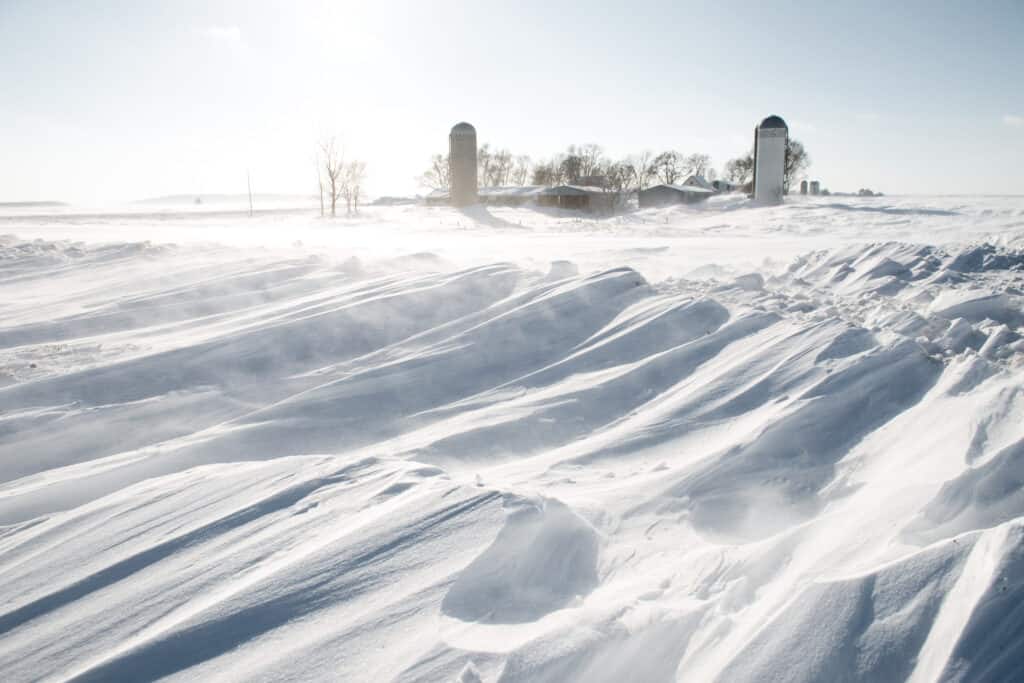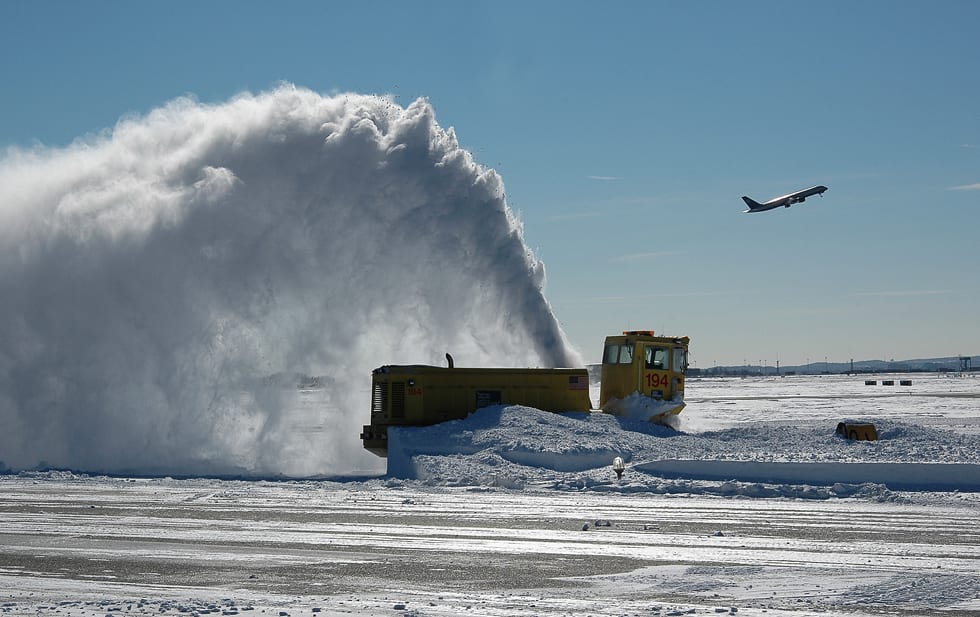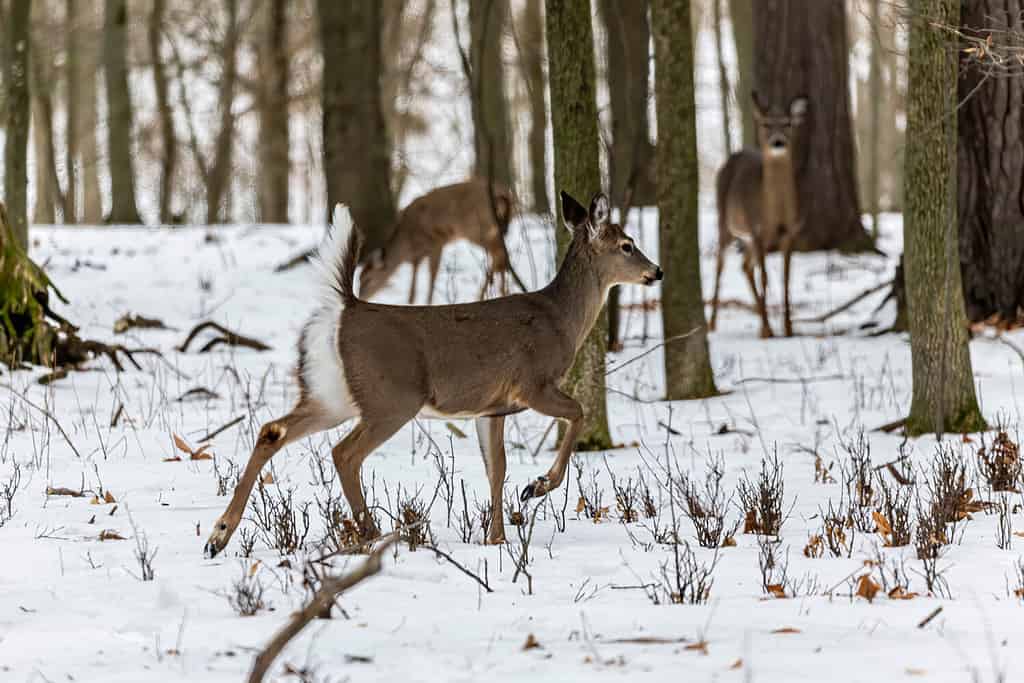While Minnesota is no stranger to snow, some of the record-breaking snowfall Minnesotans have seen will shut down a town. The 1991 Halloween Blizzard, which dumped snow from October 31 to November 3, was the largest snowstorm ever to hit Minnesota. Find out how much snow fell that weekend and its effect on the state.
Typical Weather in Minnesota in November
November is the month when Minnesota starts to gear up for winter. At the beginning of the month, the average high is around 50°F, and the low is 34°F. In the middle of the month, people see highs no greater than 45°F and no lower than 31°F. By the end of November, Minnesota has winter temperatures between 21°F to 34°F.
The average amount of snow at the beginning of the month is small, around 1.5 inches to 3.5 inches. By the end of the month, Minnesota has seen, on average, 4.4 to 12.9 inches of snow in November. However, the Halloween Blizzard brought more snow in the first three days of November than what Minnesota typically sees the whole month. This was not only the biggest snowstorm to ever hit Minnesota in November but also the top snowfall on record.

The average annual snowfall in Minnesota ranges from 36 inches in the southwest to more than 70 inches along the Lake Superior “snow belt.”
©Edgar Lee Espe/Shutterstock.com
Biggest November Snowstorm in Minnesota
On October 31, 1991, local meteorologists only predicted a few inches of snow for Halloween. However, as snow fell mid-afternoon that Thursday, it didn’t stop. Snow engulfed the Minnesota area for three days.
The moisture-heavy warm front from the Gulf of Mexico slammed into a cold front from Canada. This caused sleet and ice to shower on Iowa and Minnesota’s southern border. The snowstorm quickly picked up speed, heading north, and buried Minnesota in a 50-mile-wide band of snowfall. This continued until temperatures dropped below zero on Sunday, November 3rd. At this point, the blizzard finally petered out.
Ultimately, the biggest snowstorm to ever hit Minnesota dumped 28.4 inches of snow on the Twin Cities. That’s about half the height of Danny DeVito. Duluth had been hit with 72 hours of continuous blizzard conditions. By the end of the Halloween Blizzard, 36.9 inches of snow buried Duluth, a figure that broke the state record.

Throughout the Halloween Blizzard, Duluth experienced 72 hours of continuous snow.
©Plume Photography/Shutterstock.com
How the Biggest Snowstorm Affected Minnesota Residents
Over the course of that blizzard, 900 schools and businesses closed. Over 80,000 houses lost power, and thousands slept in shelters during the weekend. Then-governor Arne Carlson declared a state of emergency in Freeborn and Mower Counties. The economic cost of the disaster was about $11.7 million.
State Patrol responded to more than 400 snow-related traffic accidents on the first day of the blizzard. The surgeons at St. Paul-Ramsey Hospital treated eight men for mangled or missing fingers due to snow blower-related accidents. About 20 people died during the Halloween Blizzard of 1991.
However, because Minnesotans are snow veterans, the Metro Transit buses in the Twin Cities kept running through Halloween until 8 p.m. the next day. The airport in the Twin Cities only shut down on Friday and reopened early Saturday for flights. And almost 60 percent of the USPS mail carriers still ran their routes that Friday. Even the state offices stayed open save for the Legislature.
By Monday morning on November 4th, Minnesota returned to normal, and almost all schools and businesses opened as usual.

The MnDOT is in charge of removing snow on 30,000 lane miles of roadway. With 800 snow plows at their disposal, the MnDOT can complete a route in 1-2 hours in the city and eight hours in rural areas.
How the Snowstorm Affects Wildlife
Prolonged snowstorms affect access to water and food sources for wildlife. But in general, birds withdraw to their nests, and other mammals take cover in their dens, tunnels, or hallows until the snowstorm ends. Reptiles retreat underground below the frost line once the weather becomes wintry. There, reptiles hibernate until temperatures warm.
Minnesota also has about 67,400 farms, which means snowstorms like the biggest snowstorm ever to hit Minnesota often affect livestock. The snow can prevent farmers from being able to feed their animals. Or a surprise blizzard may trap cattle or prevent calves from reaching shelter. Plus, as temperatures drop suddenly, like they did at the end of the Halloween Blizzard, livestock can experience cold stress. Depending on the snowfall, like the 28.4 inches that covered the Twin Cities, cattle and other livestock will be prevented from grazing outside.

White-tailed deer often bed in thickets or under evergreen trees during a snowstorm.
©Karel Bock/Shutterstock.com
The photo featured at the top of this post is © Roger Siljander/Shutterstock.com
Thank you for reading! Have some feedback for us? Contact the AZ Animals editorial team.







